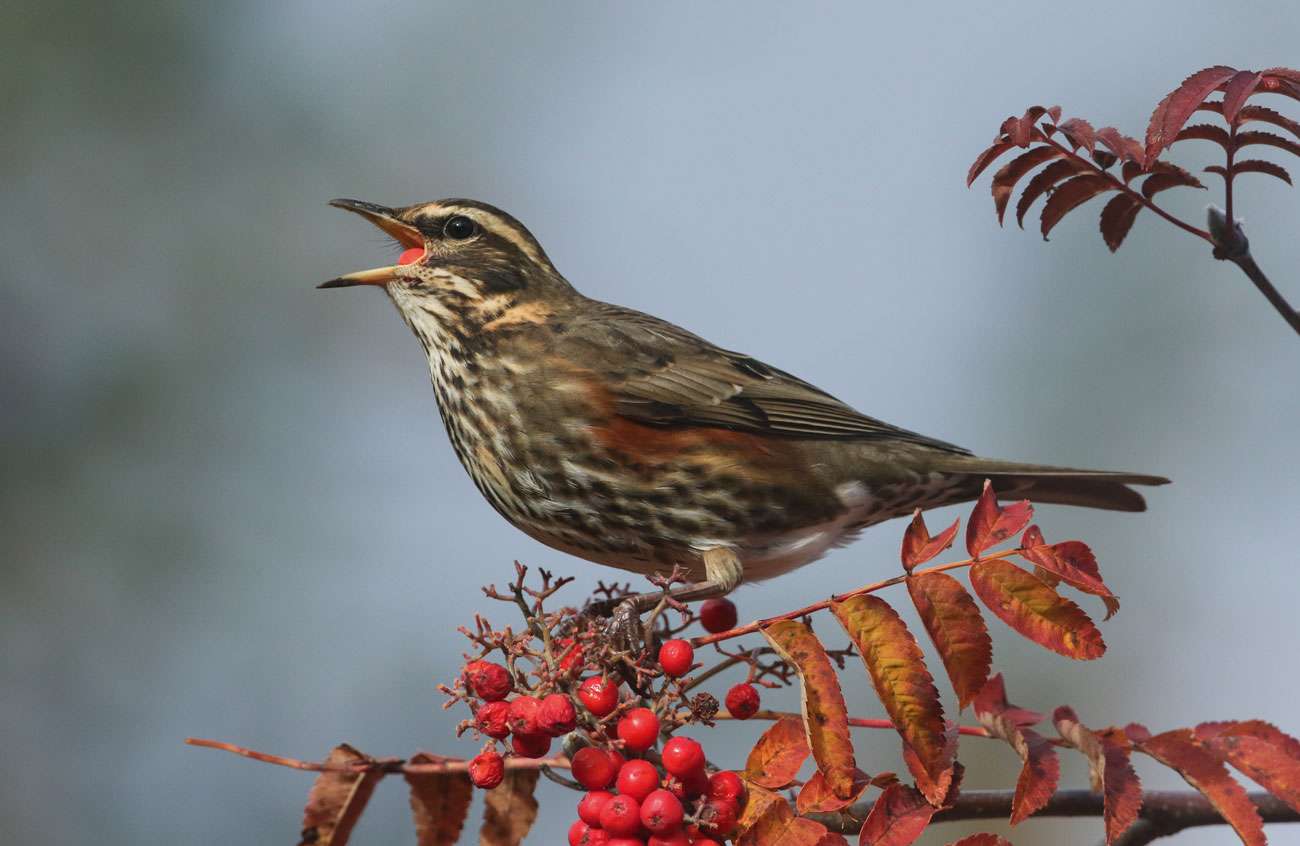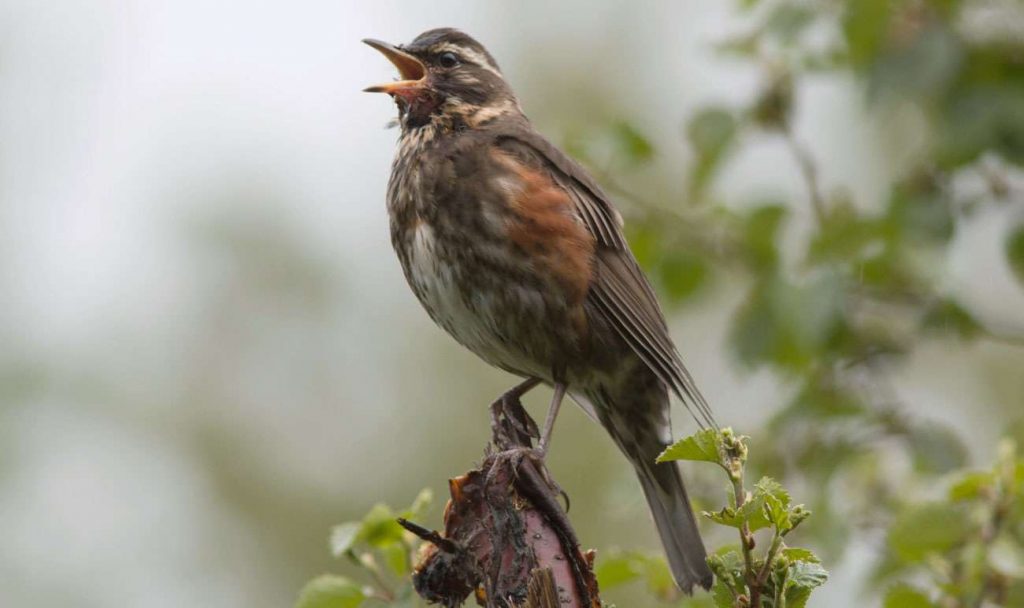
What a pretty, innocent, and fresh-looking face. There I was, only feet away from a Redwing on the pavement. The ‘go faster’ white stripe above the eye was clear to see.
But obviously in this case it had failed to work because this member of the thrush family had been nabbed, perishing at the talons of one of the Peregrines who now survive in growing numbers of Surrey towns.
This no-doubt migrating Redwing had probably been caught overnight as the falcon, perched on top of the tower block above me, used street and office lighting to pick off unwitting small birds flying overhead.
Peregrines tend to leave their calling card after a meal. They discard the heads – and that was all that was left of this little fella.
Redwings are night migrants to our shores from Scandinavia as autumn arrives and they don’t even have to be seen to be detected. They often let out a long, high pitched squeak – well described as a ‘tseeep’, as they pass over. Maybe it’s a way of staying in touch with one another in the dark.
Try listening for them later this month on still, chilled and starry nights. You don’t even need to be in the garden. Once things quieten down in an evening you can hear them going over Cranleigh High Street.
There’s an unseen battalion up there and it’s not that they are particularly fond of the village. Much the same thing is happening across much of the south-east.
The earliest I’ve had one around here was 28th September but Ewhurst has the local record with a bird on the 25th in 2010. So it might be worth looking out or listening for them right from the beginning of October, depending on the weather.
Redwings are an abundant winter visitor to Cranleigh and the surrounding villages and it is not uncommon to find flocks of 100. Over 400 is exceptional. Migration takes place during the day too and on one amazing morning three years ago on 8 October a friend and I counted 1,475 moving mostly south-west over Leith Hill. Okay, maybe it was 1,474…

You could see little clouds of them coming through the ‘Dorking Gap’ from the direction of London as they kept on a course that would have taken them across the North Sea just hours before. Perhaps they ended up in Spain.
Colder weather in late winter encourages this generally shy bird to venture into our smallest gardens for food, such as windfalls, worms or cotoneaster berries. Until then there is usually enough to eat in the fields, so they don’t need to risk encounters with domestic cats.
Redwings are not as red-winged as might be expected. They have brown upperparts and brown streaky spotting on their white breast and belly. The sub-species we see (there’s a bigger, darker version from Iceland) is slightly smaller than a Song Thrush.
It displays a white stripe below the cheek as well as on the supercilium above and may be easily overlooked as it sits quietly in a winter berry tree as pedestrians pass underneath.
Close up, though, and the rusty-redness flashes from the flanks. And as they fly, no doubt giving their characteristic squeaky call, the colour that gives them their name is splashed on their ‘armpits’ and down some of the leading edge of the underwing.
Their song is seldom witnessed here. I have heard it on the edge of Finnish forests bordering bogs in the summer and it is a hauntingly melancholy tune.
Once, however, I did get lucky and discovered one in full chorus in May in a remote area of Scotland, where a few do breed. A Redstart in the same tree wasn’t happy and was trying to outsing it.
Here we must mostly be content with the Redwings’ rich, chattering warble when they excitedly flock-up in woodland, especially towards the Spring, ahead of their journey home.
My latest was one on the date of 28 April off the Downs Link but this is very late – accounted for by the fact it was injured and could not fly.
Next month: Meet the Redwing’s big ‘brother’ – the Fieldfare.
Twitter – @Crane_Spotter
Click here to see all of Robin Stride’s previous Crane Spotters.












Having only recently moved to Ewhurst, I get great pleasure from your Crane Spotter’s articles. And after excitedly seeing a crane near Hickling Broad in Norfolk I wonder if Robin could advise approximately when these birds died out from this district. His comments would be most appreciated.